Content
Module 5: Procedure
Introduction
This module covers the process of bronchoscopic intubation, commencing once the patient is adequately topicalized and sedated and finishing when ETT placement is confirmed in the trachea.
Ten-Step Plan
- Position the patient, monitor and yourself so that everyone is comfortable.
- Railroad the chosen ETT onto the bronchoscope and secure it with a piece of tape.
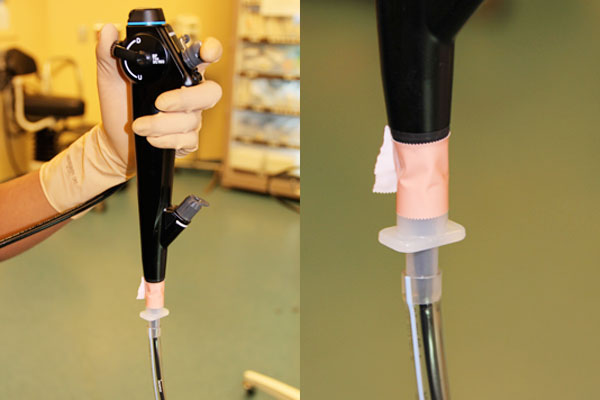
- Hold the bronchoscope in your left hand, using your thumb to manipulate the lever. Suctioning can be performed with the index finger. The right hand should be close to the nose or mouth ensuring that the insertion cord is straight at all times (for a right handed operator).
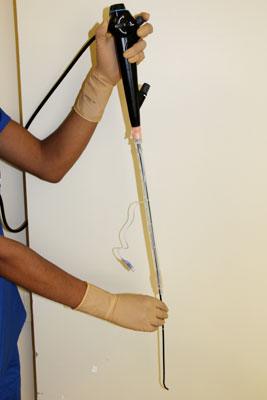
- Orient the scope to ensure that the image is being correctly displayed. Ensure that white balancing and focusing have been performed and that an anti-fog spray has been applied or the bronchoscope has been pre-warmed.
- For an oral intubation, place the oral intubating device in the mouth (Berman, Williams or Ovassapian airway).
- Insert the bronchoscope into the nose or oral intubating device and follow the patent passage until the epiglottis comes into view. Identify the vocal cords.
- Maintain vocal cords in the center field of view.
- Advance the bronchoscope into the mid trachea and firmly hold it in position.
- Insert the ETT into the nose or oral airway and advance the ETT over the bronchoscope into the trachea.
- Position the tip of the ETT 3–4cm above the carina using the bronchoscope (touch the carina with the bronchoscope, withdraw to the end of the ETT and measure the distance). Confirm position of the ETT using capnography before inducing general anesthesia.
Bronchoscope Manipulation
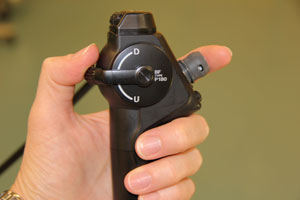
Bronchoscope manipulation starting position.
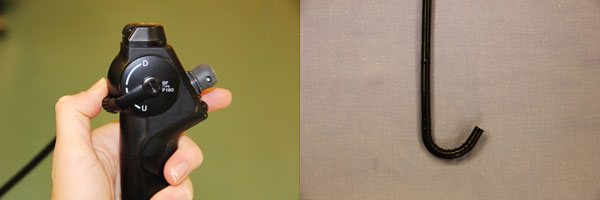
Moving the lever down causes the tip to point up.
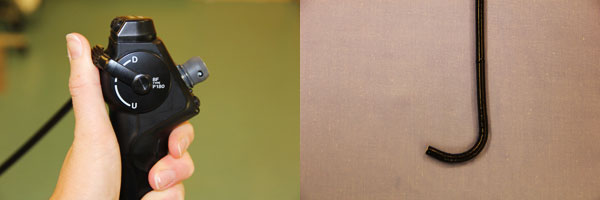
Moving the lever up causes the tip to point down.
Rotation of the handle causes rotation of the insertion cord.
Keep the insertion cord straight by keeping tension on the cord, so that proximal manipulations are effectively transmitted to the tip.
Continue to: Module 5: Advanced Knowledge

